latest news
Product categories
Hot Products
-
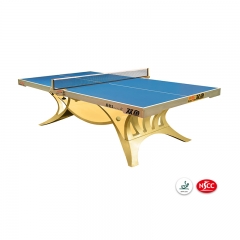
ITTF Tournament Table Tennis Table Volant King Premium Table
This premium table tennis table suitable for championships. Approved by ITTF and NSCC. Silver Undercarriage + Blue Light
Read More -

Double Fish Tournament Table Tennis Table Volant Dream 2
Double Fish Tournament Table Tennis Table Volant Dream 2 Official Table for 2016 ITTF World Tour Grand Final Size of the table top: 2740*1525 mm with frame of 50*20 mm Height of table: 760 mm (adjustable) Bounce: 220-250 mm Bounce Uniformity: ≤ 5 mm Top glossiness: ≤ 6 Degree of deformation for half of the top: ≤ 3 mm Friction factor of the table top: ≤ 0.4 Stability of the table: ≤ 3 mm Top color: Blue Undercarriage: Made of A3 steel plate Packaging size of the table top: 1600*1455*250 mm Gross weight: 62 Kg Packaging size of the undercarriage: 1650*400*400 mm Gross weight: 75 Kg Professional Official ping pong table for International sport competitions from Double Fish Sport Brand! Table Tennis Series product include Ping Pong Table/ball/blade and so on.
Read More -
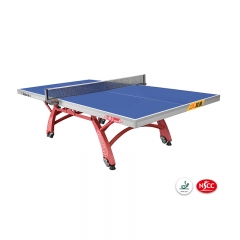
Official Table Tennis Table for Competitons XIANGYUN 328A
Premium Double Foldable Portable Table Tennis Table, Compact design The new folding system minimizes the risk of injuries during table storage and moving. ITTF approved table tennis table.
Read More -
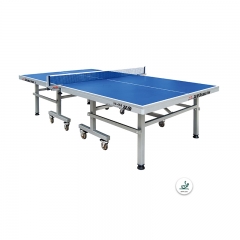
Official Durable Table Tennis Table for World Tour 99-45B
ITTF approved official durable table tennis table for international tournament. Thickness of table board: 25mm TOURNAMENT QUALITY – This professional-grade table is designed for the highest level of competition. PERFECT FOR FAMILIES – Offers premium play for all ages. Go head-to-head or fold up for individual practice. 2-inch heavy gauge steel supports hold up to the toughest challenges. A great centerpiece for your game room, den, or gym. EASY ASSEMBLY –Start playing in minutes with simple Assembly. High-quality net is equipped with locking clamps that are easily attached.
Read More -
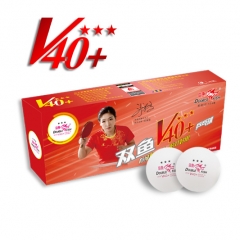
Best Quality Double Fish V40+ Volant 3 Stars Table Tennis Ball
Double Fish V40+ Volant 3 Stars Table Tennis Balls Conform to ITTF lastest T3 Technical Standards. Approved by ITTF and official balls for Table Tennis Team World Cup 2018 in London. Higher bounce ,Tougher,Safer and more Durable than traditional celluloid ABS seamed ball.
Read More -
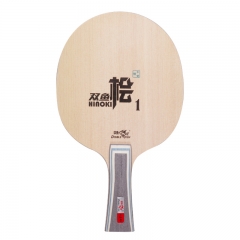
Double Fish hinoki 1 table tennis blade
wood
Read More
Tracing the origin of Double Fish - the development of Guangzhou Table Tennis Factory (Part 1)
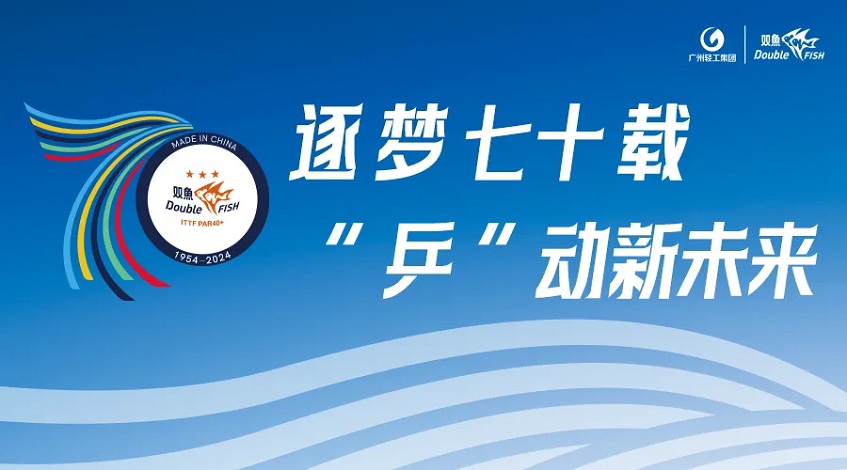
Since the founding of the People's Republic of China, Guangzhou has steadily promoted the process of socialist industrialization and modernization by implementing the five-year plan for national economic and social development. During this period, Guangzhou initially established a socialist economic system, laying the foundation for the comprehensive promotion of socialist construction.
In the autumn of 1959, an important party branch committee meeting was being held in a desolate thatched shed in Duntouji②, east of Guangzhou. The branch secretary Liao Honglue conveyed the decision of the district committee to end the work of more than 30 factories in the food, culture and education industry in the central district③ to build a chemical raw material production base here. At the meeting, everyone discussed and formed a new factory with independent accounting by taking the civil engineering equipment and workers left by each factory. Soon, the superiors agreed to their suggestion and gave a stern instruction of "only success is allowed, failure is not allowed". Thus, the name "Chenggong Food Chemical Factory" came into being.

Reply from the Guangzhou Municipal Production Committee on the establishment of Chenggong Food Chemical Factory
In March 1960, the newly born factory decided to move to the new site of Polo Temple④ on the north bank⑤. A rough and barren hillside, a new factory with a meager "foundation", faced the hardship of "the sky above the head and the wilderness under the feet". Can the factory be run in this situation? The workers said: "People who eat ready-made meals will become soft-boned. No matter how hard it is, it is not as hard as living in a thatched hut and sleeping on the mud when they first came to Duntouji.
"①The content of this article is mainly compiled based on the historical data of Chenggong Table Tennis Factory and the 303-304 pages of Volume 5 (Part 1) of "Guangzhou City Chronicles".
②According to the recollections of Li Zhouchang, the old factory director of Guangzhou Chenggong Table Tennis Factory in the 1980s, Dongjiao Duntouji is near Nangang in Huangpu District.
③The Central District was abolished in 1960, and most of the Central District was assigned to the current Yuexiu District, and a few areas were assigned to Liwan District and Haizhu District.
④The Polo Temple, also known as the Nanhai Temple and the East Temple, is located in Miaotou Village, Huangpu District, Guangzhou. It was built in the 14th year of Kaihuang in the Sui Dynasty (594), and has a history of more than 1,400 years.
⑤ As the factory site is close to the Pearl River Estuary, the composition of the surrounding seawater affects the production of chemical raw materials, so it was decided to relocate the factory to a more suitable location. "
There are ways to deal with poverty. If there is no house, build it yourself!" So, they transported all the building materials from Duntouji - whether it was a straw shed, bricks and tiles, or a stove, or even a newly planted peach tree - across the river without omission, and started to build a new factory on this barren land. On this barren hillside, cadres, workers, and hundreds of heroes were engaged in base construction. Those who burned lime, carried sand and water, moved bricks to build walls, and nailed metal frames... During the day, it was steaming; at night, it was bustling. Everyone was united, and the soil turned into gold, and the factory buildings and dormitories were built.
Although the factory building was built, it still faced many challenges. But the workers were not afraid of difficulties and began to use local methods to produce chemical products to meet the urgent needs of industrial production at that time. They set about producing basic chemical raw materials such as hydrochloric acid, pure sulfur, ethanol, monomer flavors, barium sulfide and hydrosulfuric acid, and supplied them to many factories including the Asia Soda Factory to support the development of Guangzhou's industry.
At this time, the table tennis sport in New China had gradually developed, constantly pushing the domestic table tennis sport to a new peak.
In 1959, the world was shaken by a Chinese athlete. On April 5 of that year, the 25th World Table Tennis Championships was held in Dortmund, the former West Germany. The 21-year-old table tennis player Rong Guotuan defeated many world players in succession, and finally faced the Hungarian veteran Sido who had won the world championship nine times. Rong Guotuan played steadily after losing the first game, and finally won three games in a row, winning the men's singles world championship for China. This is the first world championship since the founding of New China.
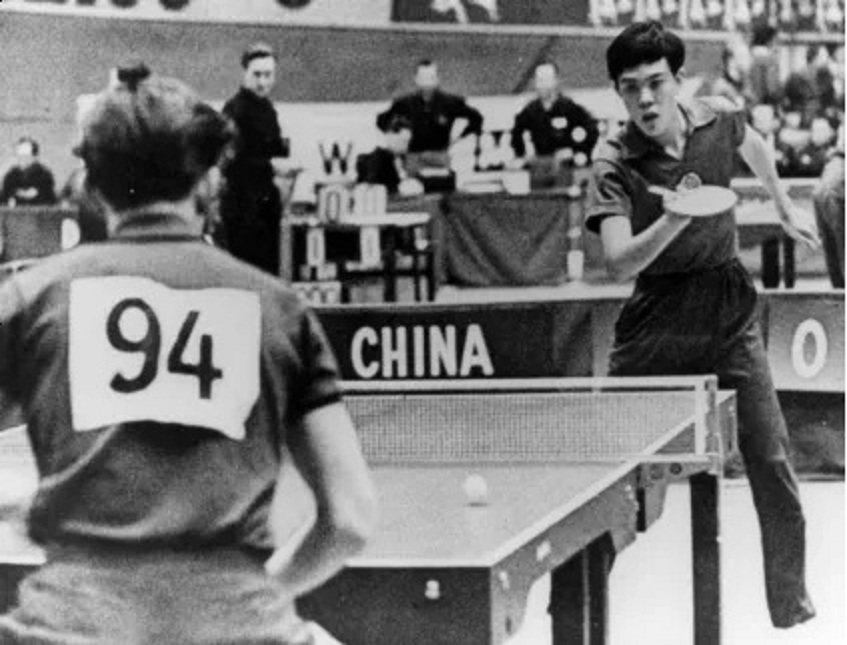
The 25th World Table Tennis Championships, Rong Guotuan is in full swing
Almost at the same time as Rong Guotuan won the championship, the International Table Tennis Federation agreed to host the 26th World Table Tennis Championships in Beijing. After the news came out, people rushed to tell each other, and all parties showed concern and support. Welcoming the "26th" and playing well in the "26th" has become a major event across the country. As a result, the table tennis craze swept across China, and the demand for table tennis equipment increased day by day.

China's first world champion Rong Guotuan
In 1960, in response to Chairman Mao's call for "developing sports and strengthening the people's physique" and to meet the people's need for table tennis when developing sports, in September of that year, the superiors decided that the future product task of Chenggong Factory would be to produce table tennis. The factory name was changed to Chenggong Table Tennis Factory, and it was decided to integrate a table tennis trial production team of Guangzhou Guoqun Musical Instrument Factory ⑥ into it. Unexpectedly, this production conversion decision determined the fate of the birth of the first professional table tennis factory in Guangzhou, and even had a profound impact on the development of Chinese table tennis equipment!

The appearance of the factory near the Polo Temple in the last century
When the Chenggong Table Tennis Factory received the task of switching to the production of table tennis balls, it faced many difficulties: first, it had no technology to produce table tennis balls; second, it had no machinery and equipment, only a few simple tools such as vises, hand drills, and broken bellows; third, it had no industrial water, only a drinking well; fourth, it had no suitable factory buildings, only four borrowed earthen houses for temporary residence. All the employees of the factory carried forward the spirit of "self-reliance and hard work", relying on simple tools to make parts and equipment; dig channels and build pools to draw mountain water, and use cars to draw river water during droughts; build earth stoves, borrow large pots, and use boiling water to "cook" table tennis balls⑦
"⑥According to the "Guangzhou City Annals", in the early 1950s, Guangzhou Guoqun Musical Instrument Factory once produced toy table tennis balls, with a monthly output of about 50,000.
⑦The original table tennis ball process: First, the 0.55 mm thick raw material is cut into discs through a punching process. Then, these discs are heated in hot water to soften, and then placed in a pressing mold and pressed into two hemispherical shapes with edges. After the initial forming is completed, the edge rings of the two hemispheres are cut off to ensure the neatness and uniformity of the edges. Subsequently, the two hemispheres with the edge rings removed are precisely bonded by using a special solvent, and the bonded spheres are soaked in warm water for maintenance. Finally, Put the bonded sphere into the mold and heat it in a medium with a temperature higher than 100 degrees (such as water or wax solution) to eliminate the bonding seams and ensure the overall strength and shape of the sphere. The process of "boiling" ping-pong balls refers to the last step, which is to heat it in a medium with a temperature higher than 100 degrees (such as water or wax solution) to eliminate the bonding seams. "

Early ping-pong ball production
Although there was no brand trademark and no clear quality standards at the time, this batch of ping-pong balls embodied the countless efforts and sweat of the older generation of Double Fish people, shining with the ideological light of "self-reliance and hard work", and finally came out successfully!






















 国内业务:(020)8432 1360,海外业务:(020)8431 9554, 售后服务:(020)8781 7102
国内业务:(020)8432 1360,海外业务:(020)8431 9554, 售后服务:(020)8781 7102
 13829778212
13829778212